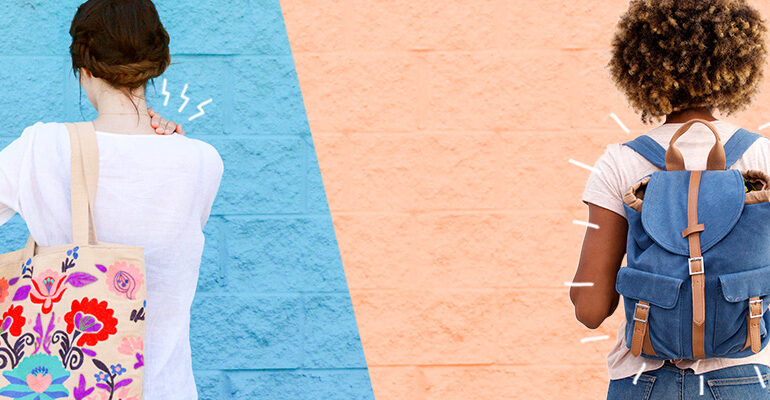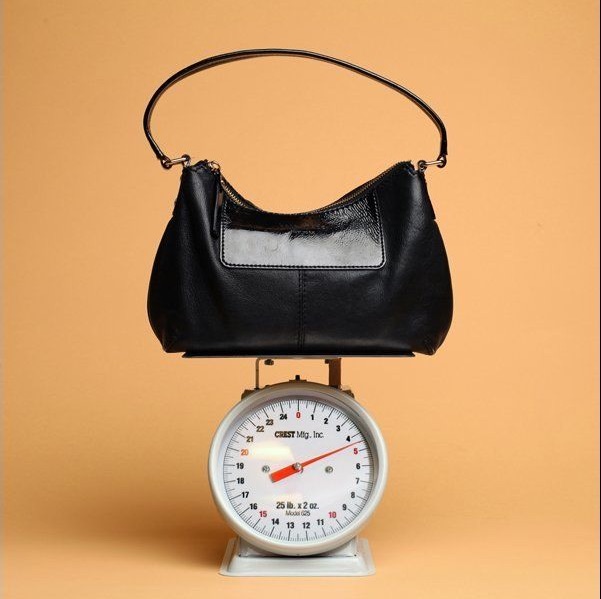
Have you ever thought about this?
For those of you who love bags and who use them often, you need to pay attention to this! Because according to the American Chiropractic Association, half of American workers admit to experiencing back pain. What’s more, America as a whole spends at least $50 billion each year dealing with the pain. One perpetrator? our heavy wallet.
“When You Carry a Heavy Wallet, Your natural gait is thrown off.”
From the doctor
“One of the consequences of carrying a shoulder bag on one shoulder is that it significantly interferes with a normal gait,” says Dr. Erickson, a chiropractor based in New York. The gait is the way your arms and legs naturally swing as you walk, and it’s an important way to keep your body in balance. When you place your handbag on one side of your body, it means that the arm on that side can’t swing properly and the other arm has to swing more. People can develop problems because of it, he said.
Your muscles are out of balance.
Since all the weight of your bag rests on one shoulder, you carry asymmetrical loads, which puts your posture off balance. Most people tend to carry a purse on their dominant side – if you were right-handed, you would hang it on your right shoulder. However, this causes the muscles in your dominant shoulder, especially the trapezius muscle, to get bigger. “We saw asymmetry in posture — such as, one shoulder being higher than the other — from chronic forcing the muscles on one side to being more developed than the muscles on the other,” says Dr. Erickson.
This asymmetrical load also causes the muscles in your spine to compensate for the weight, adds Dr. Hayden, an Atlanta-based chiropractor. This can cause the opposite side of the spine to spasm. This overcompensation can also affect your lower back and your sacrum (the bone at the base of your lower spine). The more asymmetric the load, the more everything below your shoulders has to work.
Is Your Bag Causing Back Pain?

As a result, your muscles become stiff. Carrying a heavy bag can cause the trapezius muscle. Which sits above your shoulder, to spasm and therefore tighten, along with the muscles that move from your shoulder to the base of your neck. “When that happens, it can cause a lot of stiffness in the upper back, shoulder and neck area,” says Dr. Erickson. It can also cause a decrease in the curve in the neck, known as a “military neck.”
“We also see people who have arthritis in their neck, in the lower neck, because their neck has been forced to carry this heavy load for a long period of time,” said Dr. Erickson. The smooth muscles that help you carry your handbag also help turn your head, making the action painful.
You may even have a headache. Some people will experience tension headaches because the muscles are forced to do all this weight lifting, says Dr. Erickson. When the muscles in your shoulder and neck area spasm, it can cause pain in the back of your skull that radiates forward.
What You Can Do To Fix The Damage
the first of course by reducing the weight of your bag. The rule of thumb is never to carry more than 10 percent of your body weight, but Dr. Erickson recommends not carrying a bag more than 5 percent. And you may be carrying more than you realize: “I’ve actually weighed women’s pliers before to show them how much weight they carry,” says Dr. Hayden. It’s also important to make sure that the handbag itself isn’t heavy — many designer bag accessories, such as large buttons and zippers, add unnecessary weight.
Is Your Bag Causing Back Pain?
The answer is yes. Choose a bag with wider straps. “The wider the rope, the better,” says Dr. Hayden, for distributing the load over a wider area. It protects the delicate structures in the shoulder where your nerves travel from your neck to your arms. “That’s a pretty complicated area in terms of the potential for injury from heavy weights,” he said.
Change shoulders periodically.
Both doctors recommend shifting your bag to the opposite shoulder every one or two blocks while walking so you balance the way your body carries weight and your muscles develop in a balanced way.
Consider switching to a backpack.
Because you are carrying the load on two shoulders instead of one, the load is easier to carry. But make sure your backpack doesn’t hang more than four inches below your waist, as that can cause you to lean forward to compensate and cause muscle strain.

